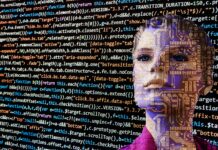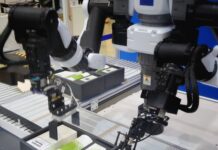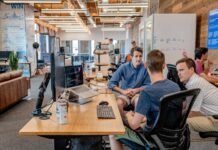Artificial Intelligence is a powerful tool that has revolutionized many fields. AI has allowed for the advent of predictions, chatbots, and image generation. Behind these exciting technologies are strong linear algebra, probabilities, and long formulas. Such an algebra barrier can prevent many AI newcomers from joining the artificial intelligence and machine learning community. Python libraries are this problem solver, as they simplify the complex nature of AI. In this article, we will go through some of the most popular libraries.
Every AI program starts with data collection. However, thousands of lines with features and labels are not the only thing our model needs to make predictions. It cannot recognize ‘raw data’. Every AI programmer has to firstly preprocess it: this involves making vectors, matrices or tensors for many many lines of features. For this step, NumPy comes in handy. This library simplifies matrix and math operations, adding support for large, multi-dimensional arrays and matrices, along with a large collection of high-level mathematical functions to operate on these arrays. This allows us to create and operate arrays with only one line of code!
Now that we know how to vectorize data and easily perform mathematical operations, it is possible to move into the next step of a program. Learning to build machine learning models can serve as a good introduction for beginners. While building Machine Learning models, beginner programmers can understand AI algorithms and main principles such as loss functions, prediction, optimization, weights and bias. A further resource that explains them in depth is linked here. In this case, the library Scikit-learn is indispensable. It helps to implement AI models, calling its functions. All of them are in the library documentation. The code examples are also stored there. It helps with data preprocessing and model selection (clustering, classification or regression).
Knowing how to operate with Machine Learning in python can lead to some more interesting projects like chatbots, text prediction and translation. Natural Language Processing is a subset of AI that can allow one to build complex and interesting applications. An introduction to NLP for beginners can be found here. The Natural Language Toolkit consists of functions needed for NLP. NLTK includes graphical demonstrations and sample data, and is accompanied by a book that explains the underlying concepts behind the language processing tasks supported by the toolkit. It accompanies AI programmers, beginning from text preprocessing and goes to its predictions and correction.
Time to go deeper in python libraries (literally!) to explore the fascinating world of Deep Learning. The Tensorflow and Keras libraries are most relevant here. You are not obliged to get acquainted with two completely different libraries to make a neural network. Instead, they are connected, as Keras acts as an interface for the TensorFlow library. It stores Deep Learning models and layers that we can add to the model. Available layers include Input, Dense, Output and another specific language, and can be customized based on the type of neural network one is interested in building. With Keras, programmers can make image recognition projects , more difficult Natural Language Processing models like chatbots, translators, and much more.
Computer Vision is yet another interesting subset of AI that offers unlimited possibilities. Often abbreviated as CV, Computer Vision is defined as a field of study that seeks to develop techniques to help computers “see” and understand the content of digital images such as photographs and videos. It involves tasks like machine inspection, motion capture etc. OpenCV is a powerful library for those who want to perform Computer Vision.



















